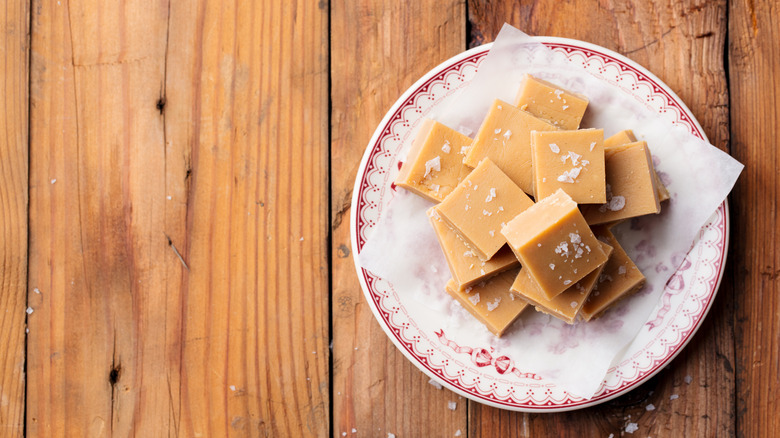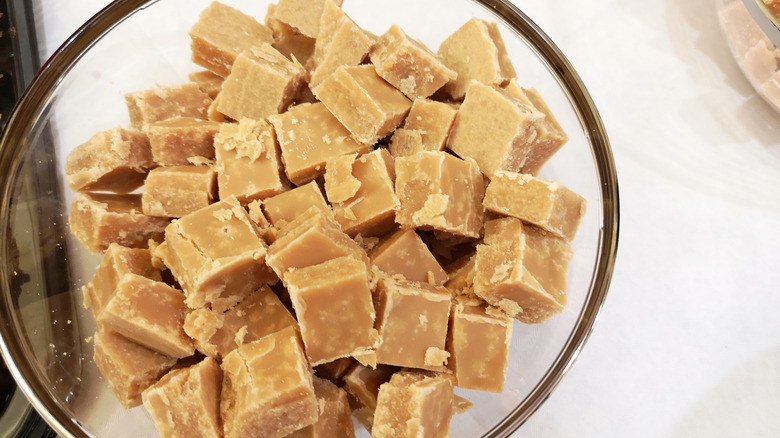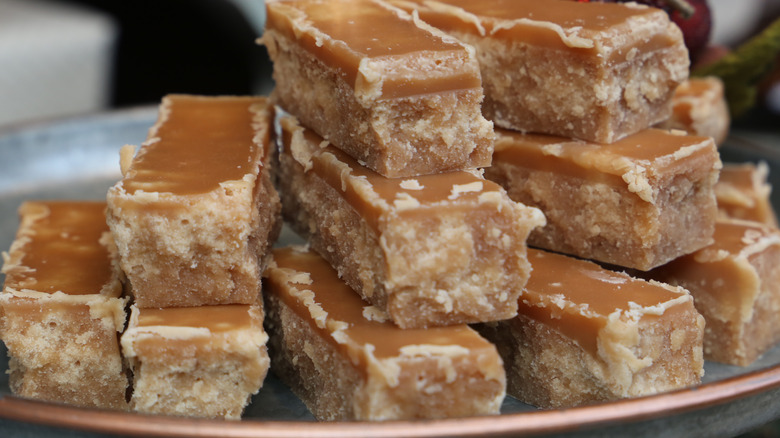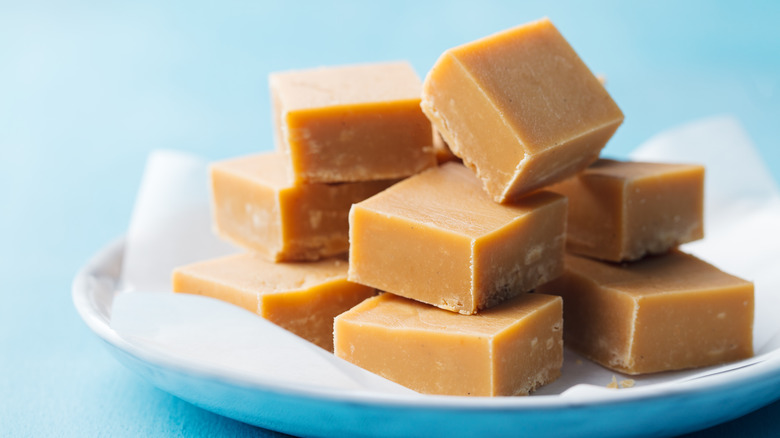What Exactly Is The Scottish Sweet Tablet?
This particular tablet may not cure any ills when prescribed, but any dark winter afternoon will instantly be brightened upon ingesting it — meet the Scottish sweet tablet. Upon first glance, it's easy to see why this delicacy might be mistaken for fudge, but Graham's Family Dairy, a Scotland-based dairy farm, insists these caramel chunks of sugary deliciousness are a different category altogether. The confection has a texture that's more coarse and grainy, and even though it's made with simple ingredients, the treat is a beloved favorite served after meals or alongside a hot cup of coffee or tea.
Unlike the popular export Scotch whisky, tablet can be difficult to buy outside of its native country, but for those familiar with the melt-in-your-mouth candy, it is a recipe that cannot be missed (via Scottish Scran). If you're eager to sample this dessert, you can definitely try replicating it and other Scottish goodies like the chocolate tiffin at home.
The history of the Scottish tablet
According to True Highlands, tablet is a simple but popular indulgence that has the power to evoke fond childhood memories for many Scots. But the origin of these sugary squares is a bit more difficult to track down.
Scottish Tablet Company recognizes that the confection was first mentioned in an 18th-century book written by Lady Grisell Baillie, but the recipe was made up of only two ingredients: sugar and cream. Since then, the recipe for the candy hasn't changed a lot over the years and you can find variations of it all over the globe, possibly because the ingredients required to make the candies are easy and cheap (via Clootie McToot Dumplings). And while there has been some debate over which sugar is best for the recipe — such as caster, white, or golden sugar — the sweet, brittle treat has remained a fixture in Scottish homes and Burns Night celebrations (per The Guardian).
How Scottish tablet is made
To properly make the perfect Scottish tablet, Fine Scottish Hampers recommends using high-quality unsalted butter, cane sugar, and condensed milk, but the most important ingredient is patience. When melting and caramelizing the butter and sugar, it's crucial to stir from time to time to prevent the ingredients from burning. The same care and attention are needed when thickening the mixture, regardless of whether an electric beater is used or the candy maker chooses to stir the sugary blend by hand.
If you're trying to make the treat for yourself at home, be sure not to skimp out on ingredients, warns Fine Scottish Hampers; use real butter, even if you might be tempted to swap out this key ingredient for a more health-conscious choice. Additionally, when you're collecting ingredients at the market, pick up condensed milk instead of evaporated milk. The former is whole milk that has been boiled with sugar until it caramelizes. While certain people may prefer to use a different dairy product, the most common one for tablet is condensed milk.
What does Scottish tablet taste like?
Scottish tablet is crumbly but when you bite into it, the sweet confection melts and becomes creamy — a unique sensation that many crave (via Fine Scottish Hampers). And while other countries may have tablet-like recipes, they are not exact replicas. For example, the Canadian sucre à la crème is made using cream and brown sugar instead of condensed milk and white sugar. The Dutch candy borstplaat, though similar in appearance, can be made with water instead of cream or condensed milk, per Graham's Family Dairy.
In Scotland, some candy makers choose to add nuts or extra flavoring, such as vanilla, whisky, or ginger, into the mixture, notes Fine Scottish Hampers. The finished sweet is typically cut up and sold in smaller cubes because it may be too rich and heavy to consume in large quantities.
If you suddenly crave candy to go alongside your afternoon coffee, we don't blame you one bit if you want to try your hand at making Scottish tablet.



